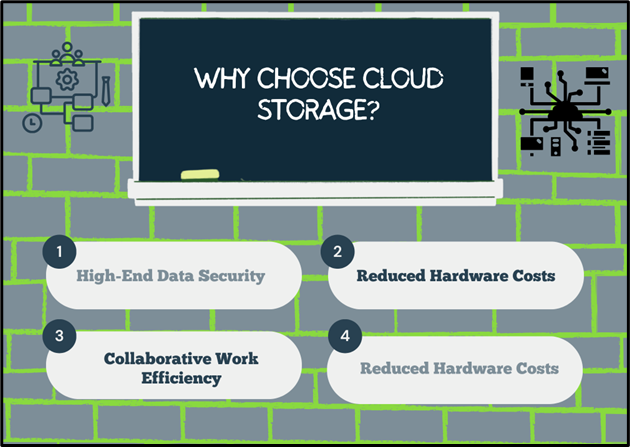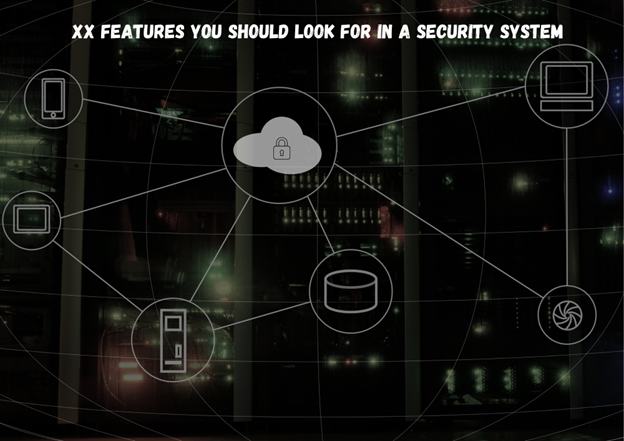7 Features You Should Look for in a Security System
Are you confident in the security system protecting your home or business? Choosing the right one can make all the difference, but with so many options available, it’s easy to get lost in the noise. In this blog, we’ll break down the 7 key features you should look for when selecting a security system—ensuring you get the best protection without compromising quality.
Whether upgrading an existing system or investing for the first time, knowing what to prioritize will help safeguard your property and give you the peace of mind you deserve.
The Must-Have Features for Every Modern Security System
Choosing the right security system involves more than just picking a camera or alarm—it’s about selecting a comprehensive solution that integrates seamlessly with your lifestyle or business needs. From smart integration to professional monitoring services, here are the must-have features for any modern security system to keep you safe, secure, and in control.
1. High-Definition Surveillance Cameras
High-definition cameras are vital for modern security systems, offering wide-angle views, night vision, and two-way audio for comprehensive protection. A reliable security camera surveillance system, featuring POE cameras or wireless cameras, enhances flexibility and performance. Integrated with live video monitoring, these systems provide real-time access via mobile apps, ensuring constant connectivity.
For businesses, business security cameras and security systems for business safeguard assets and deter threats. Types of security cameras, such as dome, bullet, and PTZ cameras, offer various features to suit specific needs. Combining home security cameras or business security cameras with live video surveillance and professional camera installation ensures optimal results. With tailored solutions, you protect your property effectively, securing both homes and businesses.
2. Wireless Technology
Another game-changing advancement is wireless technology, which reduces the vulnerabilities inherent in wired systems. Wireless cameras’ flexibility allows for easier installation and better mobility. Additionally, wireless cameras offer superior flexibility and ease of installation. Without the need for complex wiring, cameras can be placed virtually anywhere, inside or outside your property.
This makes them ideal for locations where running wires would be difficult, like remote corners of a large home or business premises. Many modern wireless security systems also come with motion detection and remote access, which allows users to monitor their property in real-time via mobile apps or web interfaces.
3. Customizable Motion Detection
In addition to wireless technology, advanced motion sensors are essential for reducing false alarms and ensuring your security system remains effective. Customizable motion detection features that include pet-specific zones can help you fine-tune your system, reducing interruptions while ensuring that actual threats are still detected.
4. Cloud Storage and Data Security
Cloud storage becomes a necessary feature as your security system collects more footage. Cloud storage offers secure access to recorded footage, which can be crucial for maintaining evidence in case of an incident. With a rising number of breaches related to unprotected storage, weighing your options between free and paid plans is essential. Paid plans often provide better encryption and security measures, ensuring your footage remains safe and accessible only to authorized individuals.

5. Environmental Sensors
While protecting against cyber threats is paramount, ensuring physical safety is equally important. Environmental sensors can detect hazards like fire, carbon monoxide, or flooding and even trigger automatic responses such as shutting down HVAC systems to prevent further damage. These sensors help safeguard both your physical and digital assets, ensuring comprehensive protection.
6. Professional Monitoring Services
While environmental sensors and cameras provide invaluable on-site protection, they must be paired with professional monitoring services to maximize safety. Third-party 24/7 monitoring services ensure that help is always just a call away, even when you’re not actively watching the feed.
7. User-Friendly Interfaces
Finally, all these sophisticated features are easy to manage and your security system must come with user-friendly interfaces. No matter how advanced the technology, if the system is complex, it becomes ineffective. Systems with intuitive designs allow homeowners and businesses to access feeds, adjust settings, and monitor alerts with ease.
Evaluating Scalability and Longevity
A scalable system can grow with you to meet changing needs over time. It will accommodate any new change or expansion you need. It adds extra cameras, incorporates more sensors, or updates the software to ensure added functionality. Modular or upgradable security solutions help avoid total changes in the whole system after your security needs have changed. Instead of a complete change to a new setting, you can upgrade or enhance what you already have. Thus making an even more cost-effective and future-friendly investment.
Protecting Your System from Cyber Threats
As more smart devices and systems connect to your security setup, the risk of cyber threats increases. Each new component can create a potential vulnerability. That’s why it’s essential to ensure your system uses encrypted data to protect sensitive information from hackers. As your security system expands, you should also update software and strengthen encryption to keep it secure. Taking these steps will help protect your physical and digital security from future risks.
In essence, building a scalable and secure system is about making informed choices that protect your investment today and for years to come. Balancing flexibility with robust security measures will help you stay one step ahead of evolving threats while ensuring your security infrastructure remains effective and reliable.
Real-Life Scenarios
When selecting security systems for different spaces, the approach varies to meet the specific needs of each environment.
Apartments
In apartment living, wireless cameras offer a flexible and non-invasive solution. Their easy installation, without the need for structural modifications, makes them ideal for renters. Home security cameras with motion detection and night vision allow for remote monitoring via mobile apps, ensuring constant surveillance without the hassle of complex setups.
Large Homes
For larger properties, a more comprehensive solution is necessary. Multiple home security cameras placed at key entry points provide extensive coverage. The integration of live video surveillance allows homeowners to monitor their property remotely, ensuring all areas are observed, even in real time. Pairing this with professional monitoring services can drastically reduce response time in emergencies.
Businesses
For businesses, combining security cameras with security guards offers a dual layer of protection. While cameras offer continuous monitoring, guards provide an immediate on-site response to potential threats. Live video surveillance further enhances security by allowing managers to monitor the property at any time, ensuring maximum safety. Integrating these elements with business security systems offers comprehensive oversight and rapid emergency response, minimizing risks and losses.
Conclusion
Now that we’ve covered the essential features, scalability, and privacy considerations, it’s important to remember that each home or business has its unique needs. Whether you’re securing a small apartment or a large commercial space, the features you select should align with those needs. Tailoring your security system to your specific situation—be it monitoring outdoor areas or adjusting for children and pets—ensures the highest level of protection. The right system will not only safeguard your assets today but will grow with you into the future.
FAQs
1. What should I look for in a security system?
Look for good cameras, easy setup, motion detection, and professional monitoring to keep your home or business safe.
2. How do I choose the right security system for my home or business?
Think about your needs like cameras, sensors, or 24/7 monitoring. Choose a security system that is easy to use and can grow as your needs change.
3. Why are wireless cameras good for security?
Wireless cameras are easy to install and can be placed anywhere without wires. You can watch them from your phone or computer.




